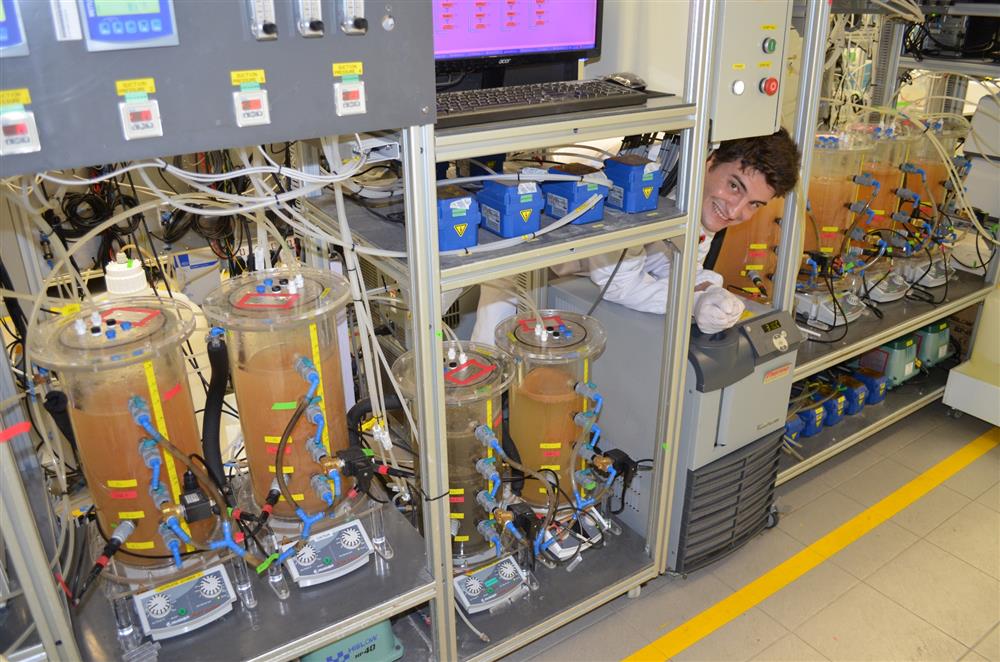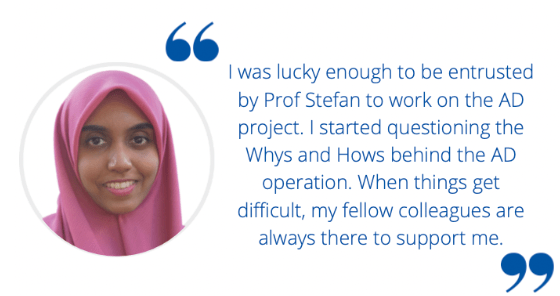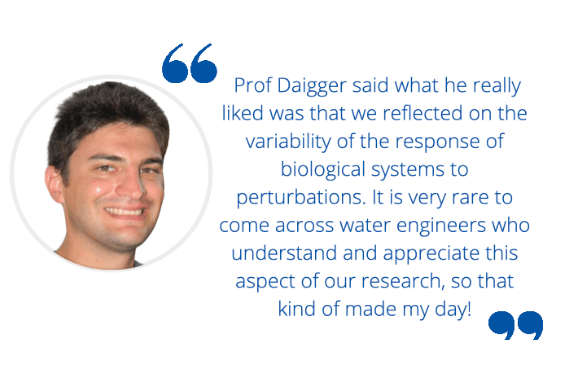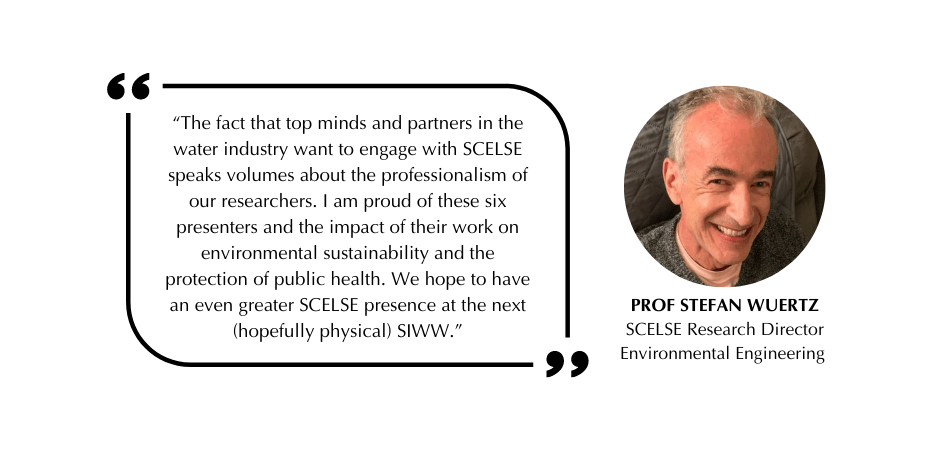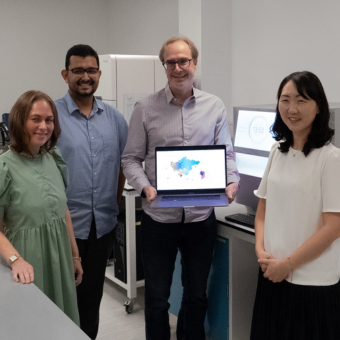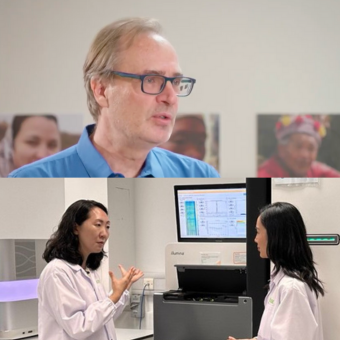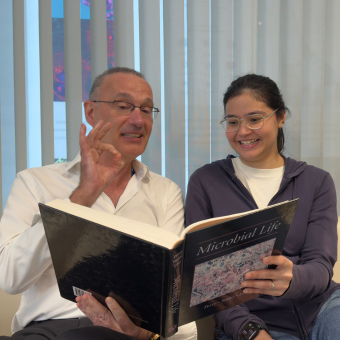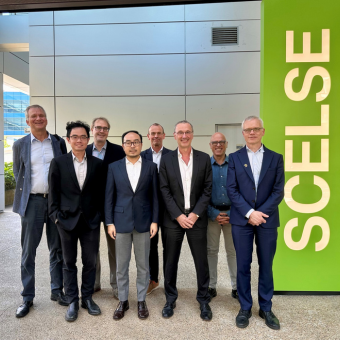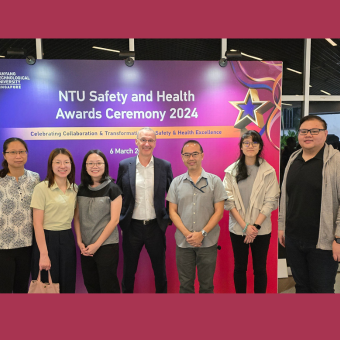SCELSE makes a splash at Singapore International Water Week
Working with wastewater can be a rewarding experience, as in the case of research associate and newly minted PhD student Abeed Fatima. In between conversations about her talk at the Singapore International Water Week (SIWW) 2021, she shares, “I find it interesting that there are always new things to learn when it comes to research, it is never stagnant.”
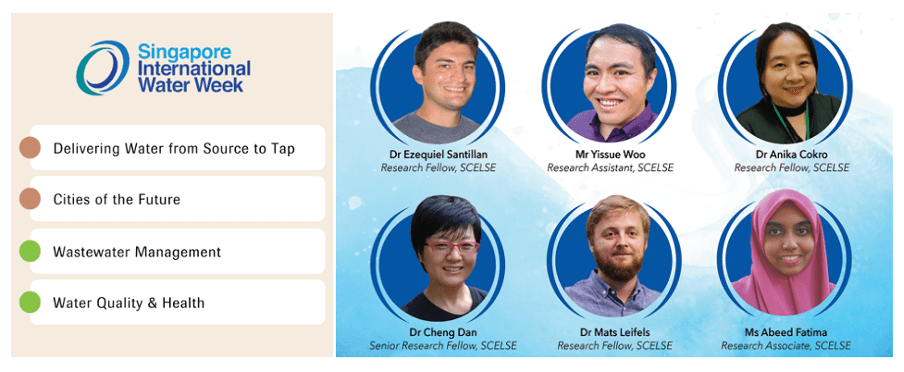
- Featured
- 16 Jul 2021
iving an oral presentation, she sought to answer the question: Can the anaerobic digestion microbiome be primed to ‘accept’ sudden disturbances when unintentional changes like shock loading occur? The answer was a yes – she explained that digesters that underwent increased frequency of pulse disturbances recovered faster in terms of their process performance.
Abeed is one of six researchers from SCELSE who featured at this year’s virtual SIWW, a renowned annual international event that brings together (online) leaders and experts from around the world to share knowledge and co-create solutions for pressing water challenges.
Improving efficiency?
Wastewater treatment is crucial – not only to protect our environment by ensuring toxins and pollutants are not released into our ecosystems, but also to contribute to the circular economy for water. Treated wastewater can be used for many purposes, including industrial cooling, and manufacturing processes (as in the case of NEWater in Singapore).
The treatment is aided by an army of microorganisms that help break down organic contaminants in the wastewater, through either an aerobic or anaerobic process. Our scientists are working to improve the efficiency of anaerobic processes.
For instance, Dr Ezequiel and his colleagues introduced a novel strategy to promote nitrite accumulation for anammox wastewater treatment, which would reduce the energy and cost required to remove nitrogen from wastewater (watch his talk and read his paper).
Traditionally, nitrogen is removed by a nitrification-denitrification process that, comparatively, consumes more oxygen and energy. Their study also contributes to understanding how disturbances affect the stability of nitrification processes and the microbial community that treats the wastewater, with implications for biotechnology and the environment.
Meanwhile, Dr Anika is working on reducing the solids retention time (SRT) in anaerobic digestors to improve performance without the need for expensive and energy-intensive pre-treatments or bio-augmentation. “In fact, halving the SRT to 15 days doubled the treated sludge turnover rate and increased biogas production by up to 65% without jeopardising biogas quality. However, a confirmation study with scaled up digesters is needed,” said Anika.
Hidden dangers?
Perhaps wastewater isn’t something most of us would interact with daily but drinking water sure is. Imagine being alerted immediately when there is a pipe leak instead of realising only when a flood of water appears. This is the goal of scientists Dr Mats Leifel’s and Dr Cheng Dan’s work.
Telling us about their work on two university campuses, Mats said, “real-time monitoring is a method that allows us to find out about potential bacteria that can cause corrosion and biofilms, so maintenance can be arranged. The methods for monitoring at present have drawbacks such as being time and energy intensive.”
The method used in this project was flow cytometry to differentiate the microorganisms present. The team is working with a collaborator, Prof Nico Boon of Center for Microbial Ecology and Technology at Ghent University (Belgium). The findings can help stakeholders plan, design and maintain drinking water distribution systems – for instance, by preventing stagnation, which allows certain organisms to develop.
Yissue also dug into another crucial aspect of water safety, studying how monochloramine (a substance meant to keep water safe) is affected by ammonia-oxidising Archaea.
These Archaea in drinking water pipes can use ammonia for energy and therefore destroy the monochloramine.
The isolation of these microorganisms is exceedingly difficult and very few research groups in the world can do it. Yissue’s work can help scientists grow similar microbes from their local drinking water pipes.
Direct application of this novel method should allow scientists to have the Archaea in culture within 3-6 months (instead of two years), if their organism is similar to Nitrososphaera.
Virtual experience
Asked about the experience of sharing in a virtual setting, Abeed said: “The virtual aspect made it less nerve wracking.”
For others, it was a mixed experience as they faced technical issues and a smaller audience (1-5 attendees) compared to a physical SIWW. Dr Ezequiel however, had a thoroughly interesting experience. His session was graced by several experts in water treatment – including Professor Glen Daigger, former chairman of the International Water Association.
All the attendees were familiar with his research and had clear and specific questions for him.
Continuing with an online grin, Eze said: “To my surprise, Prof Daigger said what he really liked was that we reflected on the variability of the response of biological systems to perturbations.
It is very rare to come across water engineers who understand and appreciate this aspect of our research, so that kind of made my day!”
